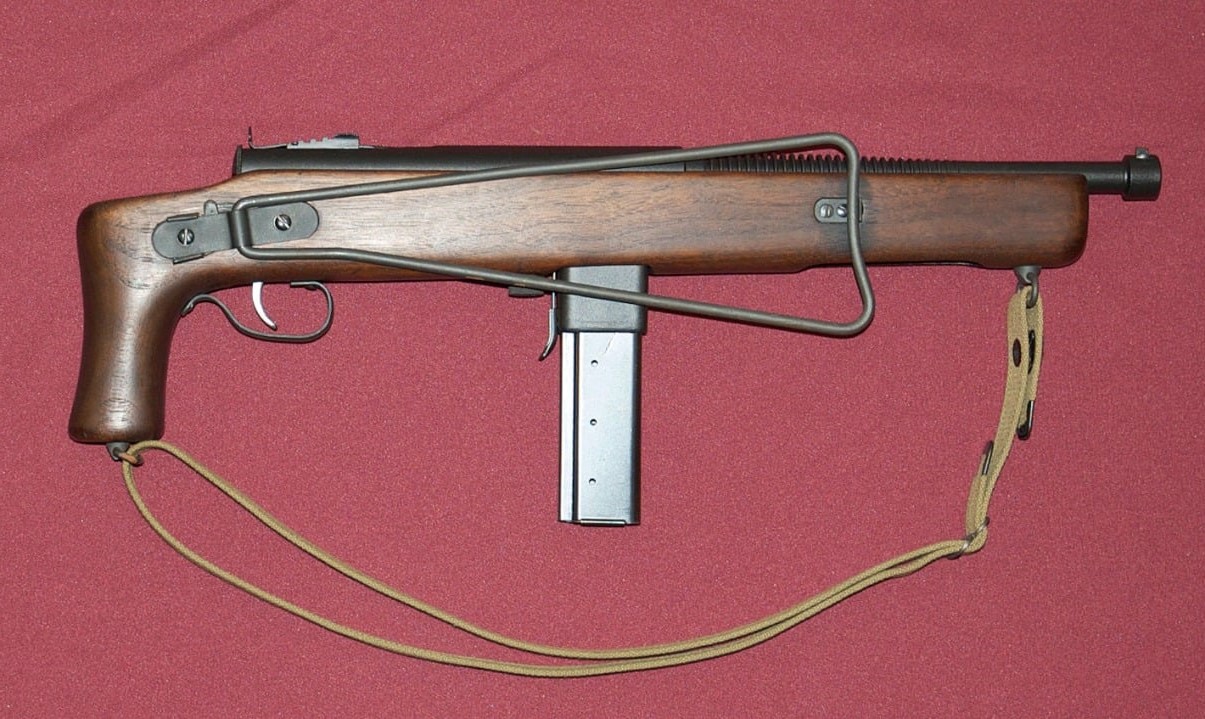
World War II was a time of intense innovation, leading to some of the most bizarre and unexpected weapons ever created. From explosive rats to bat bombs, the creativity and desperation of wartime efforts knew no bounds. Why did these strange weapons come into existence? The answer lies in the need for unconventional tactics to gain an edge over the enemy. These oddities weren't just products of wild imagination; they were serious attempts to change the course of history. What were some of these peculiar inventions? Let's delve into 35 of the strangest weapons that emerged during this tumultuous period. Buckle up for a journey through the weird and wonderful arsenal of World War II!
Key Takeaways:
- Unconventional weapons in World War II included bat bombs, pigeon-guided missiles, and rat bombs, showcasing the bizarre and creative ways nations sought to gain an advantage in the conflict.
- From flamethrower tanks to anti-tank dogs, World War II saw a wide array of strange and dangerous weapons used on land, in the air, and at sea, reflecting the extreme measures taken to achieve victory.
Unconventional Warfare
World War II saw the development of some of the most bizarre and unconventional weapons. These inventions ranged from the ingenious to the downright strange. Here are some of the most peculiar weapons used during this global conflict.
-
Bat Bombs: The U.S. developed bombs filled with bats carrying incendiary devices. Released over Japan, the bats would roost in buildings and set them on fire.
-
Pigeon-Guided Missiles: B.F. Skinner, a famous psychologist, trained pigeons to guide missiles by pecking at a target on a screen. The pigeons' pecking would adjust the missile's flight path.
-
Panzer VIII Maus: Germany built this super-heavy tank, weighing nearly 200 tons. It was too heavy for most bridges and too slow to be practical in combat.
-
Hafthohlladung: This German anti-tank grenade had a magnetic base. Soldiers would attach it to enemy tanks, where it would explode and penetrate armor.
-
Goliath Tracked Mine: A small, remote-controlled vehicle filled with explosives. It was used by Germany to destroy tanks, bridges, and other targets.
Ingenious Inventions
Some weapons were born out of sheer ingenuity. These devices often combined existing technology in new and surprising ways.
-
Sticky Bomb: The British developed this grenade covered in adhesive. It was designed to stick to tanks and other vehicles before exploding.
-
Krummlauf: A curved barrel attachment for German rifles, allowing soldiers to shoot around corners without exposing themselves.
-
Fougasse: A British weapon made by burying a barrel of petroleum and explosives. When triggered, it would create a massive fireball.
-
Panjandrum: A British rocket-propelled cart filled with explosives, intended to breach enemy defenses. It was highly unstable and often failed.
-
Stinger: A modified Browning Automatic Rifle used by U.S. Marines. It combined parts from different weapons to create a more effective machine gun.
Biological and Chemical Oddities
The use of biological and chemical weapons during WWII led to some truly strange and terrifying creations.
-
Operation Vegetarian: A British plan to drop linseed cakes infected with anthrax over Germany. The goal was to kill livestock and cause a food shortage.
-
Sarin Gas: Developed by Germany, this nerve agent was one of the most deadly chemical weapons of the war. It was never used in combat.
-
Mustard Gas: Used in earlier conflicts, mustard gas caused severe blisters and respiratory damage. Both sides prepared to use it, but it was rarely deployed.
-
Typhus Bombs: Japan experimented with bombs filled with typhus-infected fleas. These were intended to spread disease among enemy troops.
-
Rat Bombs: The British filled dead rats with explosives. The idea was that German soldiers would dispose of the rats in their boilers, causing an explosion.
Underwater Innovations
Naval warfare saw its share of strange and innovative weapons. These underwater devices were designed to give their users an edge in the seas.
-
Kaiten Torpedoes: Japanese manned torpedoes, essentially suicide weapons. Pilots would steer them into enemy ships.
-
Biber Submarine: A small, one-man German submarine. It was used for reconnaissance and laying mines but had limited success.
-
X-Craft: British midget submarines used to attack German battleships. They were small enough to evade detection and plant explosives on enemy hulls.
-
Neger: A German human torpedo. Pilots would ride inside and guide it to its target, often at great personal risk.
-
Marder: Another German human torpedo, similar to the Neger but with improved capabilities. It was used in several missions with mixed results.
Aerial Oddities
The skies were filled with strange and experimental aircraft. These flying machines often pushed the boundaries of technology and imagination.
-
Horten Ho 229: A German jet-powered flying wing. It was one of the first stealth aircraft, designed to evade radar detection.
-
Fieseler Fi 103R Reichenberg: A piloted version of the V-1 flying bomb. Pilots would guide it to the target, then bail out before impact.
-
Blohm & Voss BV 141: A German reconnaissance aircraft with an asymmetrical design. Its odd shape provided excellent visibility for the crew.
-
Messerschmitt Me 163 Komet: A rocket-powered interceptor. It was incredibly fast but had a short flight time and was dangerous to fly.
-
Gloster Meteor: The first British jet fighter. It saw limited combat but represented a significant technological leap.
Land-Based Lunacy
On the ground, soldiers and engineers came up with some truly bizarre weapons. These devices were often as dangerous to their users as to the enemy.
-
Flamethrower Tank: Tanks equipped with flamethrowers, used to clear bunkers and trenches. They were terrifying but had limited range.
-
S-mines: German anti-personnel mines that would jump into the air before exploding. They were designed to inflict maximum casualties.
-
Molotov Cocktail: A simple but effective weapon made from a bottle filled with flammable liquid. It was used by resistance fighters and regular troops alike.
-
Exploding Rats: The British filled dead rats with explosives. The idea was that German soldiers would dispose of the rats in their boilers, causing an explosion.
-
Anti-Tank Dogs: The Soviet Union trained dogs to carry explosives under enemy tanks. The dogs were often killed in the process.
Psychological Warfare
Weapons designed to confuse, demoralize, or deceive the enemy played a crucial role in psychological warfare.
-
Ghost Army: A U.S. unit that used inflatable tanks, fake radio transmissions, and sound effects to deceive German forces about troop movements.
-
Operation Mincemeat: A British deception plan involving a dead body dressed as a British officer. The body carried fake documents intended to mislead the Germans about Allied invasion plans.
-
Propaganda Leaflets: Both sides dropped millions of leaflets over enemy territory, spreading misinformation and attempting to demoralize troops and civilians.
-
Loudspeakers: Used to broadcast misleading information, fake battle sounds, or demoralizing messages to enemy troops.
-
Double Agents: Spies who pretended to work for one side while secretly providing information to the other. They played a key role in many deception operations.
Final Glimpse at WWII's Odd Arsenal
World War II saw some of the strangest weapons ever conceived. From the bat bombs designed to unleash fiery chaos to the Panjandrum, a rocket-propelled wheel of destruction, these inventions reflect the era's desperate innovation. The Hafthohlladung, a magnetic anti-tank grenade, and the Gustav Gun, a massive railway cannon, highlight the lengths nations went to gain an edge. Even animals weren't spared, with pigeon-guided missiles and anti-tank dogs making the list. These bizarre creations remind us of the intense pressures and rapid technological advancements of wartime. They also serve as a testament to human ingenuity, albeit in the pursuit of conflict. Understanding these weapons gives us a unique perspective on history, showing how necessity can drive both brilliance and madness.
Frequently Asked Questions
Was this page helpful?
Our commitment to delivering trustworthy and engaging content is at the heart of what we do. Each fact on our site is contributed by real users like you, bringing a wealth of diverse insights and information. To ensure the highest standards of accuracy and reliability, our dedicated editors meticulously review each submission. This process guarantees that the facts we share are not only fascinating but also credible. Trust in our commitment to quality and authenticity as you explore and learn with us.


